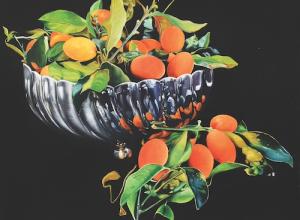The Colmar Treasure: A Medieval Jewish Legacy is a small exhibition, not even filling the full length of its gallery that runs alongside one of the medieval-style gardens at the Met Cloisters in Manhattan. Yet the objects on view, ranging from delicately crafted rings and precious jewels to gilded buttons and a silver key, reveal why the scale of the show is poignant. These were all believed to belong to a family caught up in 14th-century violence that destroyed the thriving Jewish community of Colmar in Alsace. That anything at all survives is a miracle.
“There's almost nothing that can allow us to evoke the vitality of the Jewish community of medieval Europe,” said the exhibition organizer Barbara Drake Boehm, the Paul and Jill Ruddock Senior Curator in the Department of Medieval Art and the Cloisters. “And that's so important because they were very much present.”































